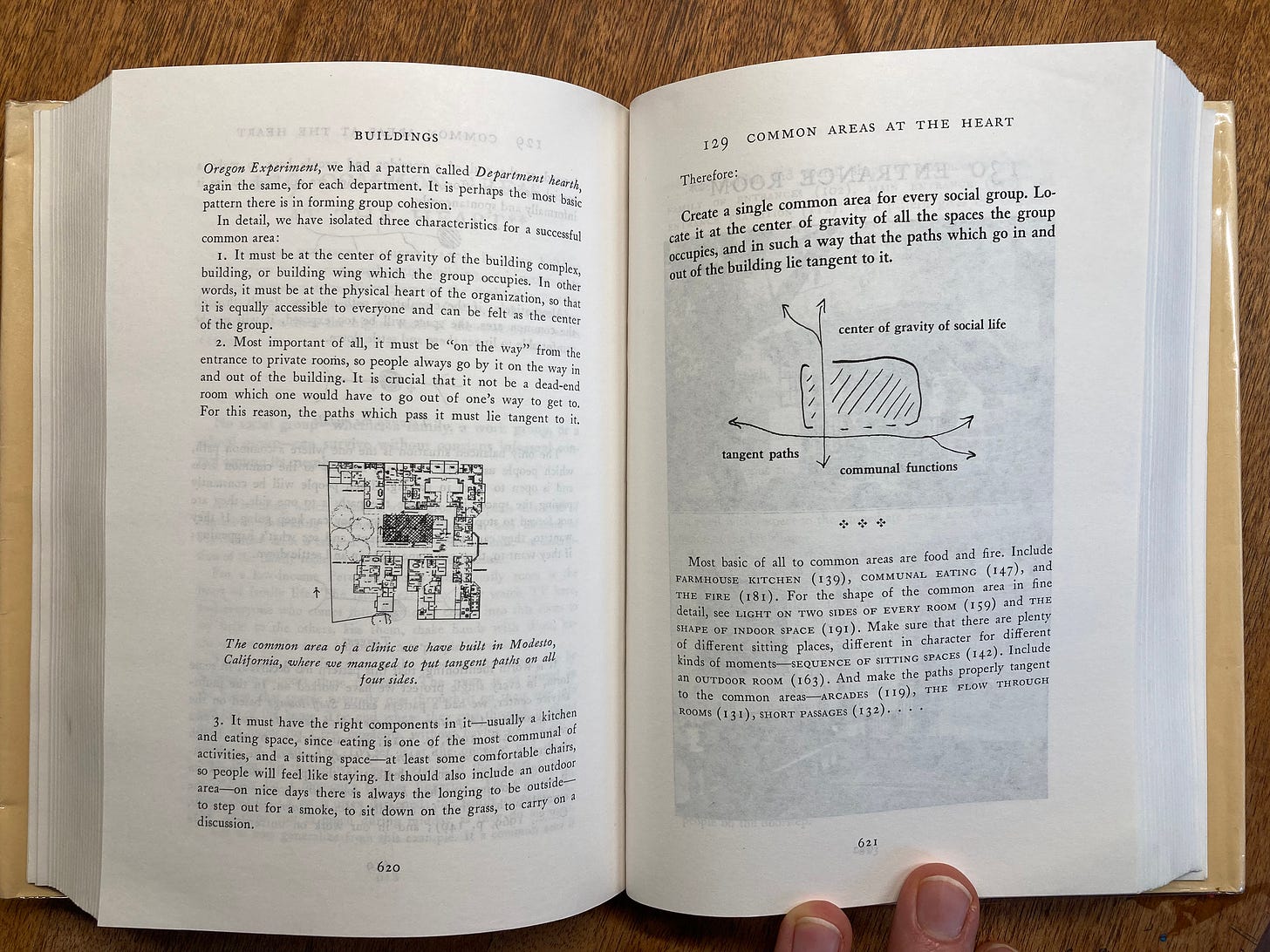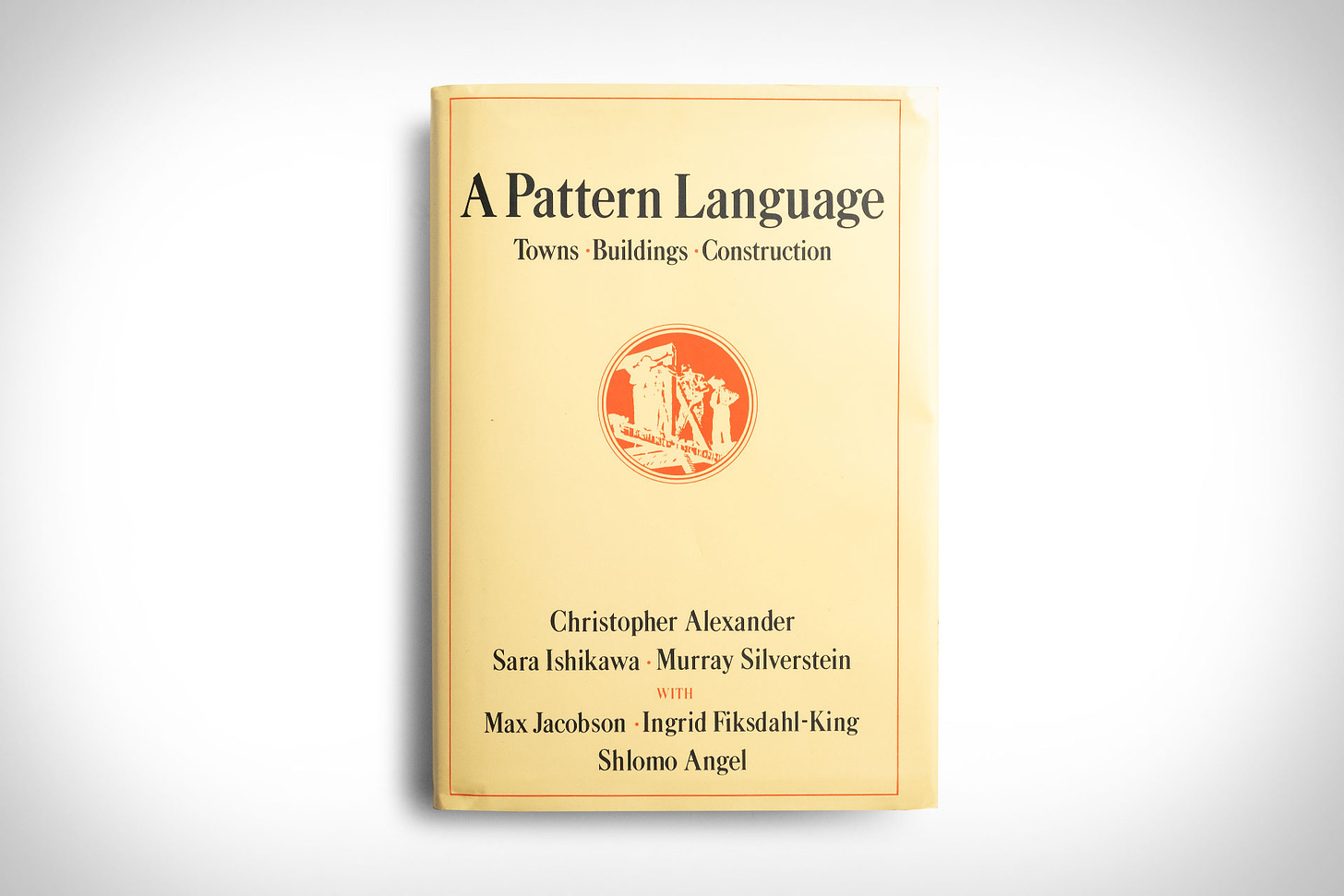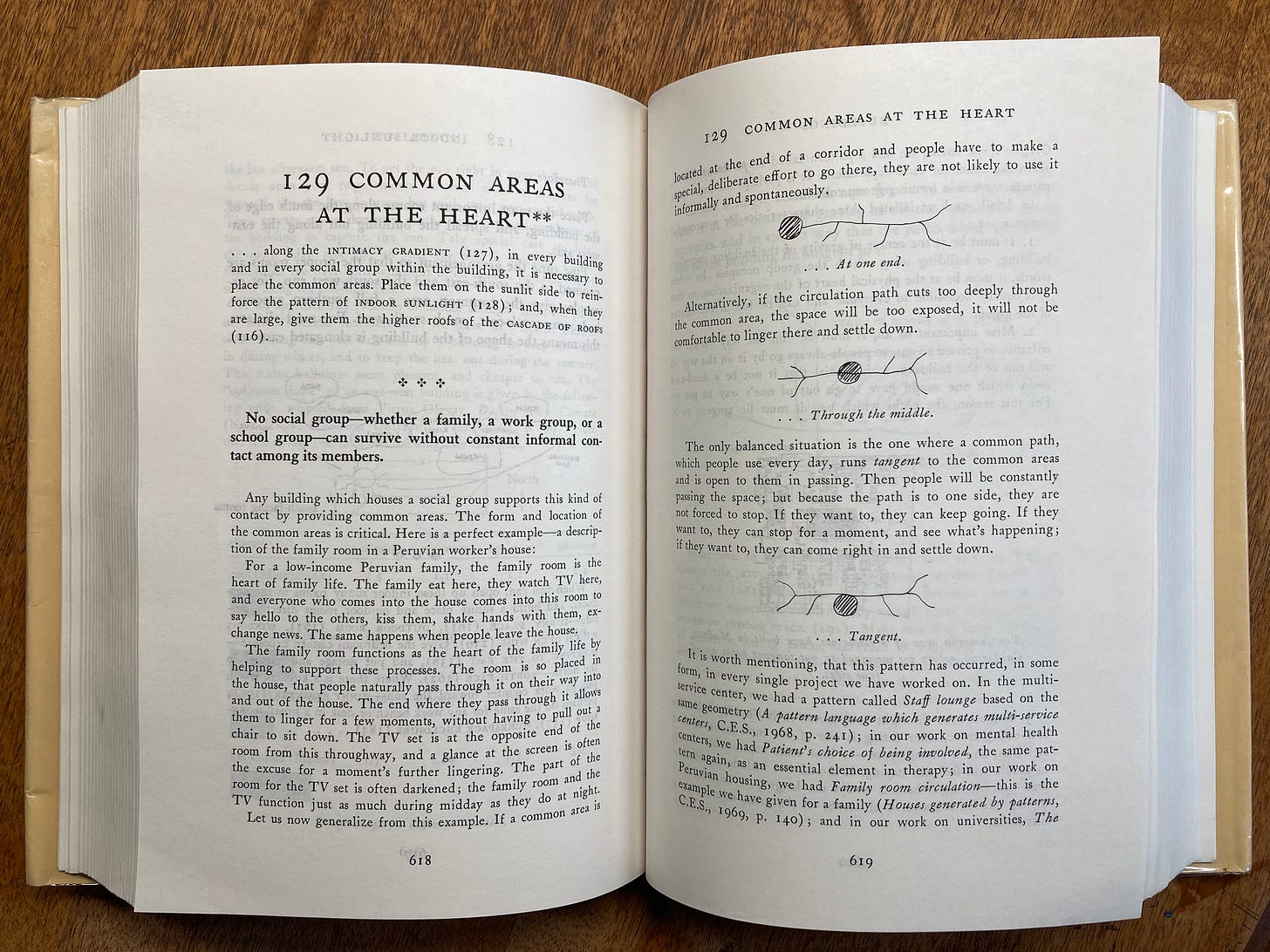An Egan Pattern Language
(Wanna see the index? You probably want to see the index.)
As you might have already gleaned, this substack explores the vast possibilities that Kieran Egan’s approach to education opens up.
Alas, he never laid out a specific curriculum.
Mind you, that’s not to say that he didn’t write any specific recommendations for what might happen in a classroom powered by his paradigm. He wrote quite a lot!1 But they’re piecemeal, spread across multiple books, and alternately between being too general and too detailed. They’re not boots-ready for classrooms.2
If we really want Egan-fueled schools, we need to come up with some boots-ready stuff, even if they’re rough.
Behold — an Egan pattern language!
I.I.: What is it?
Ideas, inspired by Egan’s writings, that I’ve been tinkering around with over my years of being a tutor/teacher/parent of elementary-students/undergraduates/high-schoolers/crayon-eating-preschoolers in the subjects of science/the-humanities/math/test-prep/art, and also in helping people start schools.
And the inspiration for it comes from a 1977 book about (of all things) architecture.
A Pattern Language
When Christopher Alexander began, architecture was in a bad place.
His peers saw their profession as a branch of avant-garde art — the point of designing a building was to strike out boldly in a new aesthetic direction, to impress the critics, to provoke the normies! If a tortilla chip is a vehicle for salsa, then an architectural project (they held) was a vehicle for an idea.
Alexander saw this as trading a whole inheritance for a pot of stew. In his mind, the point of architecture was to understand how the built environment shaped how people lived, and to help them live better. A building was a vehicle for human flourishing.
Alexander was a Jew born in Austria; when he was two, Hitler annexed his country, and his family fled to England. He grew up in Oxford, the medieval city made of a mishmash of architectural styles: steep Tudor roofs, churches hugged by Gothic buttresses, industrial Victorian colleges walled with red brick, lofty museums built in imitation of the ancient Greeks, open squares popularized in the Georgian era, deep-porched houses built in the Arts and Crafts movement. Oxford was a city of no one design — it was an anarchy of styles. According to the au courant opinions of the architectural cognoscenti, it shouldn’t have worked. Yet, it was obviously gorgeous, and supported human life.
What did the people who built Oxford know that the architectural establishment had forgotten?
Alexander set the rest of his life to answering this question. Wanting to find the breadth of wisdom across the world, he traveled the world to see how different societies had dealt with the persistent problems of human living. And with his team, he wrote a book — A Pattern Language — to catalog the answers they found which popped up in culture and culture.
It wasn’t enough, he found, to describe mere buildings. A building is made up of rooms and staircases, windows and walls — each of which could make its own contributions to human life, or go wrong in its idiosyncratic way. And each building is a part of a street, a neighborhood, a city. To describe what they found, Alexander needed to show how buildings connected to higher and lower levels.
And so they invented a new kind of book. In place of chapters, they described 253 “patterns” — designs of any level of the built environment that promote human flourishing. They organized the patterns in order of descending scale, from towns to buildings to construction techniques. High-level patterns include things like “neighborhood boundaries” and “house clusters”; low-level patterns include things like “front door bench” and “paving with cracks between the stones”.
Alexander & company knew, of course, that 253 patterns would be a bit much for most folks — a problem, as they were radicals of the charming 1970s sort. They wanted to empower people to design their own lives, and needed to make their book the sort of thing anyone could pick up and immediately start using. So they devised a standardized template for their patterns: the problem it solves, a description, diagrams, and links to other patterns that support it.
I.I.: You’re losing me.
Here’s an example:

I.I.: I think I understand the “pattern” part. Why call it a “language”?
What they wanted was to spark a movement, and movements need common language. By giving specific names to the patterns they found, they hoped to make it easy for people to communicate with each other.
And it worked! To this day, Alexander has a devoted following in architecture (King Charles and Sarah Susanka of The Not So Big House series number among them). His ideas have spread even wider: if you’ve done Agile software development, played Simcity or The Sims, or used Wikipedia, you’ve dipped your toe into his intellectual lineage.
I.I.: Gotcha. Why are we talking about architecture, again?
Because — and here’s the big reveal! —
we’re building
a pattern language for Egan education.
Christopher Alexander and Kieran Egan both grew up in the postwar British Isles. They both saw their professions to be chasing misguided goals. They both thought the mainstream intellectual world had lost track of the basics of human nature. They both found in the past the accumulated wisdom needed to help us navigate the future.
What else? They both settled down as university professors on the West Coast. They both attracted a devoted fan base.
Heck, they even both died last year, within two months of each other.
This is all to say: there are deep similarities between the two men, and between their approaches. I think the “pattern language” approach Alexander developed is exactly what our community is looking for.
What this is, in a nutshell
I.I.: So you’re ripping off Alexander’s approach?
And how!
I’ve prepared a bunch of patterns, around 200 in all. We’re currently (January 2024) publishing two of them a week.
Sensible questions
I.I.: Who are you thinking this’ll be useful for?
Middle-school language-arts instructors. Elementary school teachers. High-school gym coaches. Professors of computer science. Parents of preschoolers. Owners of jujitsu dojos. Autodidacts. Special ed teachers of all ages.
Which is to say: if you work with human beings — well then, probably, you.
There are two special sets of folk that I’m hoping this will be extra useful for: homeschoolers and potential school founders. These are the people who have the biggest blank canvases, who can reimagine education from the ground up.
I.I.: Think there are a lot of homeschoolers who’d be interested in this?
Very much so! As a homeschool parent who literally wrote “homeschooling” into his vows, I can say that there’s a hunger out there for something that brings together the intellectual richness of classical education (without the rigidity), the emotional joy of unschooling (without the niggling fear that your child will grow up to be a mooch), and the glory of outdoor education (without, y’know, mud everywhere and all the time). I think something like this is what a lot of people mean when they say “eclectic”. Egan provides this, and more.
(Does that sound too easy? I became more confident of this when I was talking about my Egan workshops with the wonderful Cait Curley on her podcast The Homeschool Sisters — on, alas, an episode that’s yet to be released! She suggested her podcast pulls in many of the same folk who get excited by Egan, and that in fact there’s a whole contingent of the homeschooling community in particular who are dissatisfied with the options on offer — evidence of which can be seen in the many avowedly secular homeschoolers who are drawn toward the explicitly Christian approach of Charlotte Mason homeschooling.)
I.I.: Are there oh-so-many “potential school founders” out there?
The streets are crowded with lovers;
there are thinkers on the subways.–Leon Wieseltier
Yes, there are. And some of them even know it.
Even before the pandemic, the microschool movement in the United States was picking up steam; in the last couple years, it seems to be going gangbusters. There are entire organizations (Prenda and Acton Academy come to mind) to guide ordinary folk through the boring nuts and bolts.
I.I.: Are you, Brandon, going to travel around the world to find these patterns?
If someone wants to front the money, I’m not opposed to it! But in a way, this is what Egan already did. He once described his method as just being an attempt to make sense of what he saw great teachers — across cultures, across ages — doing.
I’ve already prepared a bunch of patterns that I’ve been experimenting with over the last decade, but there’s room for so much more. Because — say it with me! —
Egan isn’t enough.
Some educational philosophies don’t play well with others, but one of the glories of Egan is that he helps make clear sense of what works across educational traditions. He throws open the doors so we can look into very different practices, and borrow elements that work. That means we can look into Montessori, Waldorf, and Reggio Emilia. It means we can consider classical Catholic schools, vocational apprenticeships, and Ayn Rand academies. It means we can take inspiration from Jewish Talmudic study, the Mandan Sioux training of young men, Siberian shamanic tutelage, Plato’s Academy, Aboriginal storytelling, Confucian exam schools, and Mesopotamian math riddling.
Small finicky questions
Imaginary Interlocutor: I keep seeing these weird emoji — 🤸♀️, 🧙♂️, 🦹♂️, 👩🔬, and 😏 ? — on your patterns pages.
Oh, those.
The trouble with Egan’s paradigm is that — while there are simple ways to understand pieces of it — seeing how it all connects together is hard. Damn hard. Damn damn damn hard!
(So hard, I set myself to writing a three-hour-long book review just to try to do it justice.3)
But at the chewy core of Egan’s understanding of education is the notion that, for humans, certain practices and formats of information are special. Egan called them “tools”, because throughout history they’ve been useful to connect minds together and pass information down.4
He grouped those tools into five “toolkits” — SOMATIC (🤸♀️), MYTHIC (🧙♂️), ROMANTIC (🦹♂️), PHILOSOPHIC (👩🔬), and IRONIC (😏). Each opens up a different way of understanding the world. For Egan, “becoming educated” meant cultivating all five of these understandings.
On this substack, whenever I make reference to one of Egan’s tools, I’ve taken to making note of which toolkit it comes from. As it would be really irritating to keep reading “Somatic” and “Mythic” and “Romantic” and so on, I’ve just used those emoji.
Imaginary Interlocutor: Honestly, it’s sorta irritating to see those weird emoji all the time, too.
[Throws up hands] You want too much.
Imaginary Interlocutor: What about the little degree symbol (°) I keep seeing?
Those are my way to note you’re seeing a pattern in our Egan pattern language. In the glorious future, all of those will be linked to their page, so you can jump around.5
Further questions about that glorious future
I.I.: This sounds like a book. Is this going to be a book?
Wouldn’t that be amazing! Maybe. Sounds like a good Kickstarter project.
I.I.: I’d like to comment on these!
I WANT YOU TO, TOO. Any subscriber can comment on most of the posts on this substack; to comment on the patterns, become a paid subscriber. (You also get other perks. So many perks!)
But mostly, you probably just want to start exploring the patterns.
He wrote quite a lot of everything — the man made Alexander Hamilton look like a bad case of writer’s block.
For elementary school, you’ll want to see chapter 6 of his book Primary Understanding; for middle school, chapter 9 of Romantic Understanding. For high school, invent a time machine and beg him to write a stand-alone book titled Philosophic Understanding; short of that you can find a sketch of his ideas in chapter 7 of The Educated Mind. I drew from all of these to give examples in my review of Educated Mind, which won the Astral Codex book review contest.
He also calls them bonnes à penser, and some even meaner things, too.
I’m stealing borrowing kidnapping this notation from lesswrong.com, home of the Rationalist community. Dear people at Less Wrong: your site is a work of exquisite beauty; you should sleep soundly at night.






